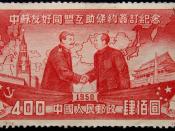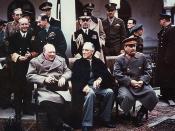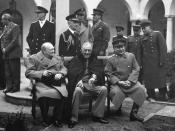Having reached the pinnacle of power in 1929, Stalin attacked the primary problems facing Russia, which broadly fell under the economic, political and social, and the foreign respective categories. Success can be defined as the positive externalities brought about to the people and country. Where as failure being the lack of such. In my essay I will be using this definition to determine the successes and failures in the respective categories which this ÃÂman of steelÃÂ brought about with his policies.
Economically, Industrialisation was evident in the Five Year Plans (FYPs) At the time Russian industry was recovering from the effects of WWI, and production from heavy industry was surprisingly low. France, Germany, Britain and the USA all surpassed Russia in terms of steel production. Stalin believed a modernized industry would protect Russia from the inevitable war with the West and identify his regime as unlike those in the past defeated during the Russo-Japanese War and WWI.
The first plan concentrated on heavy industry ÃÂ coal, iron, steel, oil and machinery, which were scheduled to triple output. The two later plans provided for some increase in consumer goods as well as heavy industry. It has been argued that in spite of all kinds of mistakes and exaggerations, the plans were a remarkable success. . By 1940 the USSR had overtaken Britain in iron and steel production, though not yet in coal, and she was within reach of Germany. These spectacular advances made her the world second largest industrial power by 1940.
From this angle a seemingly resounding success however the means of which came at a cost, the cash was provided entirely by the Russians themselves, with no foreign investment. Some came from grain exports, some from overcharging peasants for use of government equipment, and the ruthless ploughing back...


